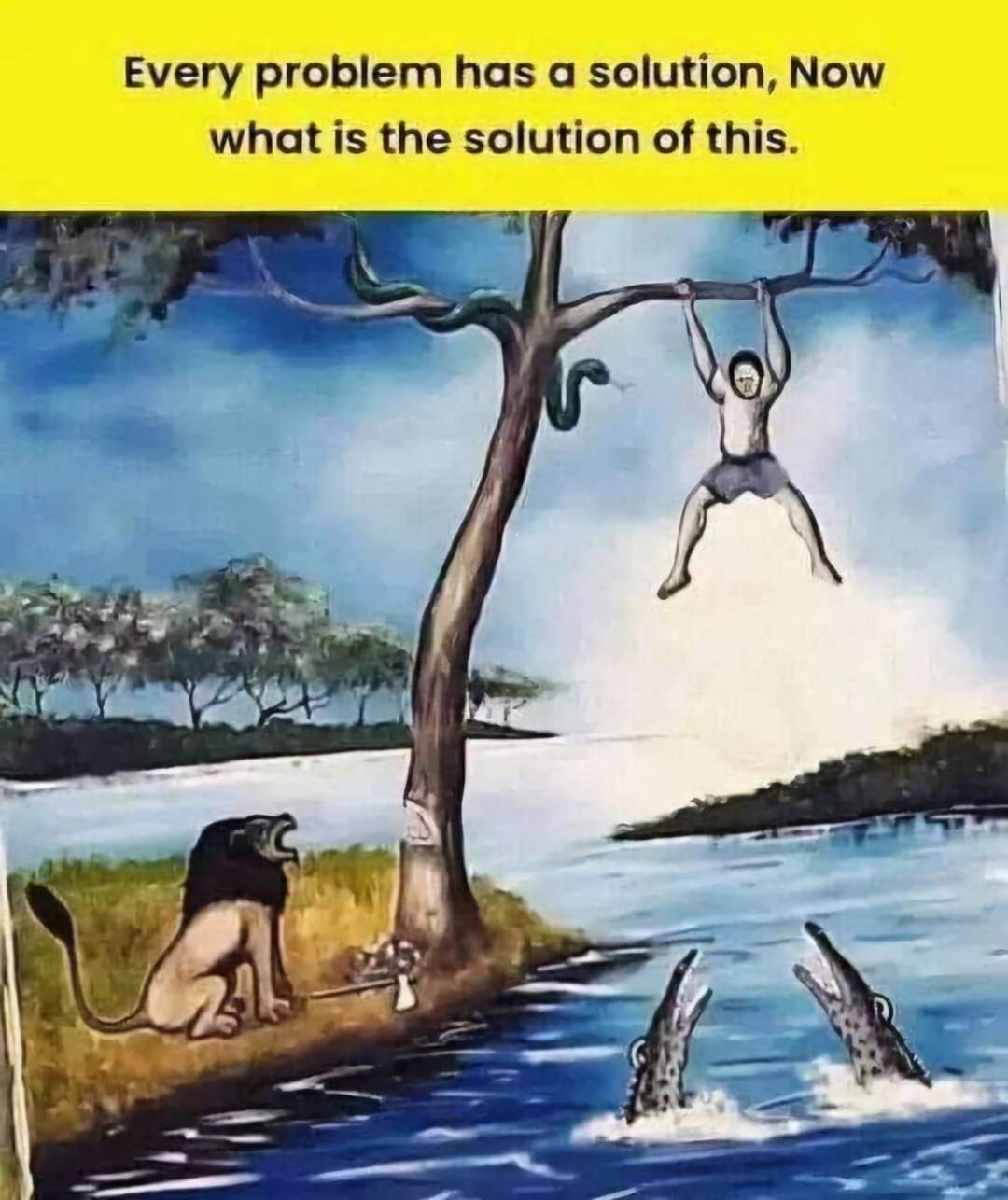Imagine finding yourself in a life-threatening situation deep in the jungle, where every direction spells danger. You’re hanging from a tree branch, your grip weakening by the second, while the wild stares you down from every angle. Below you, crocodiles circle in the murky water, their jaws open and waiting. On the ground nearby, a lion paces back and forth, growling and alert. To make matters worse, wrapped around the same tree you’re hanging from, a venomous snake slithers quietly, inches away. It’s the kind of nightmare that seems unsolvable—but is there actually a way out?

This intense jungle scenario may seem impossible to survive at first glance. Every potential move appears to lead to certain death. Climbing up risks a deadly bite from the snake. Dropping down might lead to being mauled by the lion or snatched by the crocodiles. Hanging on isn’t an option forever; eventually, your strength will fail. So, what can this man do to stay alive? The answer lies not in brute strength, but in calm thinking, awareness of animal behavior, and precise timing.
To begin solving this jungle dilemma, we need to understand the nature of the threats. Let’s start with the snake. While it may seem like the most immediate danger, snakes—especially in the wild—usually only attack when provoked or threatened. If the man stays perfectly still and avoids startling the snake, there’s a strong chance it won’t strike. The key here is patience. Remaining motionless might encourage the snake to lose interest and slither away to a safer spot, especially if it feels the tree shaking beneath it or senses stress in its surroundings.
Then there’s the lion on the ground. Lions are apex predators, but they are also cautious hunters. They prefer to chase prey that offers the least resistance. If the man stays quiet and doesn’t draw too much attention, the lion may eventually grow bored or distracted, especially if other sounds or scents lure it away from the area. Time is critical, and using it wisely could create the opportunity he needs. Lions don’t typically linger forever if they sense no easy kill.
As for the crocodiles in the water below, they’re dangerous but not particularly fast or agile on land. Their strength lies in stealth and surprise, usually when prey enters the water unaware. If the man were to fall in, his chances of survival would drop drastically. However, crocodiles often drift away when they sense no activity. Waiting long enough for them to move on or reposition could open a path forward.
The smartest choice in this scenario may be to wait until both the snake and the lion lose interest. With slow, calculated movements, the man could begin to shift his weight and prepare to climb or swing. If the snake retreats and the lion is no longer watching, he might be able to use a nearby vine or branch to either lower himself quietly to a safer part of the tree or swing to another branch or bank out of the crocodiles’ reach. Jungle trees are often full of vines, branches, and other tools—if you know how to use them.
This entire situation is not just about escaping danger; it’s a test of strategy, self-control, and survival instinct. Wild animals are dangerous, but they’re also predictable when you understand their patterns. The key to solving the unsolvable is not to panic. Staying calm, observing carefully, and moving only when the time is right may be the only way out.
In conclusion, while the jungle trap may seem like a death sentence, there is a solution hidden within the chaos. The man doesn’t need to fight his way out—he needs to outthink the threats around him. By waiting for the snake to leave, the lion to walk away, and the crocodiles to drift out of range, and then using the environment to his advantage, he has a real shot at escaping unharmed. The jungle may be full of danger, but sometimes, patience and clever thinking are the best survival tools of all.





